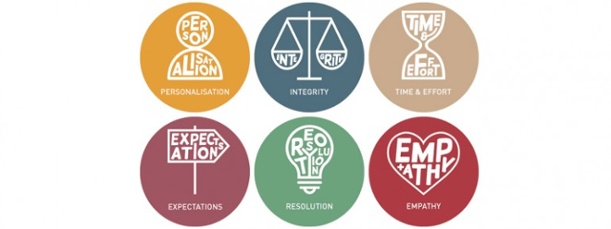Emotional analysis of customer feedback – the missing link
According to Bruce Temkin’s 2016 study, after a positive emotional experience, customers are 15 times more likely to recommend a company. 15 times more likely! That’s a huge difference. Not surprisingly, emotion analysis is receiving a lot of buzz. But do the current solutions deliver on the key question that companies should be asking themselves: How can we provide a positive emotional experience to our customers?
How can we provide a positive emotional experience to our customers?
We were on our way to a wedding in Norway, with a layover in Hamburg, when the airline lost my husband’s luggage. Tired and frustrated, we headed to a local department store to buy a whole new wardrobe. Two years passed and I still remember feeling surprised. The shopping assistant was fantastic. He was genuinely helping us choose the right items without being pushy.
Think about your typical shopping experience. Mine is quite different. I often hear a mindless “that looks great on you” and feel annoyed at the lack of care.
The Emotions That Matter for Customer Experience
Analysts report on various aspects of emotions that matter to Customer Experience (CX).
Forrester: Emotions that lead to a positive CX
Anjali Lai writes in her Forrester report that several high-intensity emotions are tightly linked to consumer spend, brand preference, and brand love. Among such emotions are the feeling of being valued and being surprised. My shopping story is a good example. Or, think of the first time you have ordered an Uber. I was surprised at how easy the process was, compared to a regular taxi.
Beyond Philosophy: Long-Term Value vs. Short-Term Spend Emotions
Another notable study of emotions in CX is the work by Colin Shaw, the Emotional Signature framework. He talks about three clusters of positive emotions:
- Attention: exciting, stimulating, indulging, exploratory.
- Recommendation: trusting, valued, focused, safe, cared for.
- Advocacy: happy and pleased.
Nunwood: Six Pillars of CX and Their Link to Emotions
The Six Pillars are not exactly emotions but relate to how customers feel. Instead, these are six essential characteristics of a Customer Experience:
Let’s link each pillar to the emotions it may evoke:
- Personalization leads to the feeling of being valued and cared for
- Integrity leads to trust
- Time and Effort can leave customers feeling pleased
- Expectation can lead to a positive surprise
- Resolution can evoke the feeling of being appreciated
- Empathy leads to gratefulness and happiness
How Algorithms Detect Emotions in Text
There are two types of approaches to emotion detection. The basic idea is that customers use emotive words and phrases. Therefore, algorithms can use them to guess related emotions.
Dictionary
Heatbeat AI uses a dictionary of 8000 words and phrases that map to 99 emotions and 10 categories.
Here is one of their visualizations that shows people’s emotions towards US election candidates this year:
Machine Learning
Kanjoya detects several dozens of specific emotions using Machine Learning. It uses algorithms trained on thousands of hand-tagged posts on a social site, the Experience Project. Here, each time people posted a story there, they tagged it with the relevant emotions.
What is the missing link of emotional analysis?
The analysts tell brands: These are the emotions that matter. These emotions lead to loyalty, advocacy, and love. The technologists tell brands: We can detect if your customers are experiencing Joy, Sadness, and Fear. As you can see, there is a disconnect!
Unfortunately, neither group provides the answer to the fundamental question: Which actions lead to a positive emotional experience?
The missing link of emotional analysis are the actions that trigger certain feelings in customers.
If actions trigger emotions, then the analysis should not be focused on detecting emotional words, but on measuring the activities of the company and their employees.
For example, I may not have mentioned the particular emotive words and phrases in my NPS comment for that exceptional department store. But, I described what happened when I went there:
The shopping assistant offered us her undivided attention to help us choose the right clothes.
The fact that I feel Joy is evident from my NPS score. But, it doesn’t tell the store what they did well. What happened is that the shopping assistant has shown care and integrity. Instead of selling the most expensive piece of clothing, he delivered on his role. As a result, I felt valued, I felt trust, and I was positively surprised by this experience.
Emotion analysis for actionable insights
The ideal analysis of customer feedback should focus on themes, linking them to emotions. Furthermore, this should be unique to each brand, survey, and even touchpoint. For example, during shopping showing empathy is not as important as when making a claim with an insurance provider or filing a technical issue with your broadband provider.
Conclusion
Brands need to know which emotions matter to their business. They also need to understand which employee behaviors trigger those emotions. Finally, by using thematic analysis of customer feedback, companies can measure each month whether customers notice employee’s efforts and appreciate them. Will these measurements hold up against the brand promise in its marketing messages? How did they make the customers feel?








